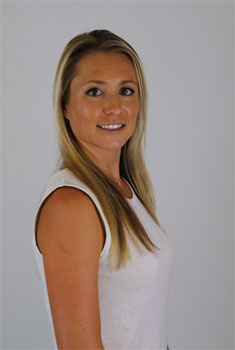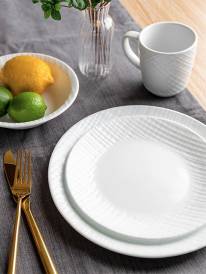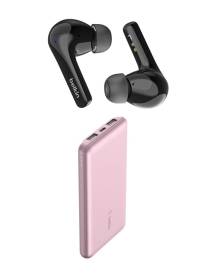Kate Save Spring Clean Your Health Interview

Why Has Ketosis Become the Most Searched Diet Term?
Google Trends data on ketosis has doubled in the last 12 months, as everyone prepares for their spring/summer preparations.
Be Fit Food offers scientifically formulated weight loss meals that have seen proven results, with case study candidates losing 2-10kg in the first 2 weeks on the Be Rapid program. Founded by Dr Geoffrey Draper, a weight loss surgeon and Kate Save, a weight loss dietitian, diabetes educator and exercise physiologist, the program meets strict dietary guidelines to maximise and maintain weight loss.
Interview with Kate Save, Co-Founder of Be Fit Food
Question: What is ketosis?
Kate Save: Ketosis is a metabolic state in which fat is metabolised to produce ketone bodies which provide energy rather than glucose. Our bodies preferred fuel source is glucose, which is largely consumed in the form of carbohydrates (breads, cereals, grains, legumes, fruit, starchy vegetables and dairy products and sugar). Once we limit the carbs in the diet, our body has to look elsewhere for fuel so it will break down fat – either dietary fat or stored body fat – to produce ketone bodies or ketones for fuel.
Question: Why do people want to put their body in ketosis?
Kate Save: Ketosis can assist with weight loss due to the breakdown of body fat and reduced ability to store fat due to reduced insulin levels and improved insulin sensitivity. Ketogenic diets have also been used in the treatment of epilepsy. Some athletes are also using ketosis to fuel endurance sports such as long-distance running, iron man triathlons and swimming. As the body no longer relies on carbohydrates for fuel they can complete these evens without thinking about re-fuelling along the way.
Question: How is this different to Nutritional Ketosis?
Kate Save: Mild nutritional ketosis is a state whereby the body's ketone levels are only slightly raised (0.3-1.5mmol/l) which is also an effective way to lose weight, without having to consume such an extreme diet. Mild nutritional ketosis can be induced by limited carbohydrates and protein to recommended daily amounts. Fats are more liberal but still restricted to achieve a negative calorie intake or calorie deficit inducing effective fat loss, the side effects are also less extreme.
Question: How do we know if we are in ketosis?
Kate Save: You can easily test whether you are in ketosis with a urine test strip, blood ketone meters (similar to those used to test blood sugars) and breath ketone meters. When daily carbohydrate consumption is restricted, the body usually shifts into ketosis and blood levels of ketone bodies start to rise to 0.3-1.3mmol/L (this is mild nutritional ketosis). As carbohydrates are further restricted to around 20g per day, ketone levels rise even further up to ~3mmol/L although this restriction is very difficult to sustain long-term and mild nutritional ketosis is just as effective for weight loss.
You may notice that your breath starts to smell a little funny as one of the by-products of the breakdown of ketones is acetone. Acetone is the chemical responsible for the production of nail polish remover and some paint thinners. Acetone is exhaled through the lungs, thus making your breath smell a little like nail polish remover. Aside from the need to use breath mints, this is not harmful and is a sure-fire sign that your body is in ketosis. It has been reported that babies who are exclusively breast fed for up to 2 years remain in ketosis and are capable of extraordinary growth and development.
Question: Is the keto-diet similar to paleo?
Kate Save: The ketogenic diet has some similarities to a paleo diet as both diets are largely based on removing the majority of carbohydrates, especially processed carbs and including more liberal amounts of high-protein and fatty foods such as meat, chicken, fish, and eggs and low starch vegetables. A truly ketogenic diet includes up to 90% of calories from fat sources including butter, cheese, oils, fatty meats. Whilst the paleo diet includes more flexibility with some fruit and starchy vegetables. A mildly keto-diet is more similar to paleo but less restricted on eliminating whole food groups such as dairy and legumes as they are important nutritionally on lower calorie intakes.
Question: Why can low-carb diets be detrimental to a women's health?
Kate Save: If all carbs are cut out, including those from nutrient dense-vegetables, legumes, dairy and fruit, then women can suffer from malnutrition and constipation due to dietary imbalance.
Question: What are your thoughts on rapid 'quick-fix" diets?
Kate Save: My advice is - if you can't see yourself developing life-long healthy eating habits from any -quick-fix' diets, then it's best not to explore them. They may result in yo-yo dieting and poor body image. It's best to learn how to enjoy a more nourishing, portion controlled and well balanced diet and seek the guidance of a dietitian or doctor.
Question: How can we create a steady and maintainable weight loss program?
Kate Save: Start with eating a mostly plant based diet including non-starchy veg first and small amounts of starchy veg, legumes and wholegrains.
Secondly, seek protein sources such as meat, chicken, fish, eggs and dairy with each meal and a good balance of healthy fats from avocado, nuts and seeds Thirdly, only eat -REAL' foods- that means anything that you can tell its origin. For example, if you are choosing a snack, I would recommend making your own or finding a great provider ie; Chia Berry Pudding -berries came from a field with no added sugar, chia seeds from a crop and plain yoghurt such as Greek style or natural.
And last of all, hydrate with plenty of water all day long and it will help you to better assess hunger as often we mistake thirst for hunger which can lead to overeating or unnecessary snacking.
Question: What is Be Fit food?
Kate Save: It is a dietitian and doctor designed, chef created and scientifically formulated meal program for rapid weight loss and healthy eating. Before BE Fit Food, the best tool we had for rapid weight loss was the 'bars and shakes" diet. This technique is used by weight loss clinicians around the world to induce ketosis and suppress appetite.
Although, we believe there are 3 main problems with a 'bars and shakes" diet;
It is boring, repetitive in flavour and texture and also artificial
Choosing to exclusively consume -non-food' items for weight loss is not good habit forming for long-term weight management
It sets a poor example for the younger generation who mirror their families eating behaviours as it negates nutritional education
At Be Fit Food, we promise to provide our customers with meal programs that are supported by science to effectively reduce their weight and improve other health parameters whilst only using real food ingredients. Our meal programs are nutritionally balanced and we offer a range of highly restricted calorie and carbohydrate options. We have breakfast, lunch, dinner and snacks.
Question: What makes Be Fit food unique?
Kate Save: Our meal programmes are nutritionally balanced
High in protein
Include small amounts of Low GI, wholegrain carbohydrates
Portion, calorie, and carbohydrate controlled
Have a minimum of 4-12 vegetables (meals, salads and soups)
Low in added salt (all meals are classified as low Sodium)
Contain no added sugar or artificial sweeteners
Our meals and soups are fully prepared and snap frozen for freshness for safe home delivery (currently throughout Victoria and soon to be Australia Wide) or pick up in-store
Question: Where did you get the idea for Be Fit food?
Kate Save: Mr Geoffrey Draper (Bariatric Surgeon – weight loss) and I have worked together for 10 years and always wanted to offer our patients a REAL food meal program instead of bars and shakes diets for rapid weight loss. Unfortunately there was nothing like on the market, which is needed prior to bariatric surgery. Around 6 years ago we created a meal plan with recipes that we gave to patients to try, prior to surgery (using real foods).Although it worked on those who stuck to it, most people preferred the convenience of shakes to avoid having to shop and cook. Hence we began developing our meal program available for purchase.
Question: Can you share the Be Fit story, so far, with us?
Kate Save: In August 2015 we started selling online, after hiring a kitchen and chefs. In Jan 2016 we opened our own kitchen and by May 2016 we opened a food outlet due to the number of daily enquires the chefs were getting. By Feb 2017 we opened a larger store and warehouse and in August 2017 we were on Shark Tank. To everyone's surprise, even Janine's who was the investor from the show, we exceeded all expectations as 1000's of enquiries came in Australia wide and we sold out for 4 weeks. Fortunately with an organisational restructure from 10 to 60 staff during this period, we have caught up with demand and are back on track.
Interview by Brooke Hunter
MORE



